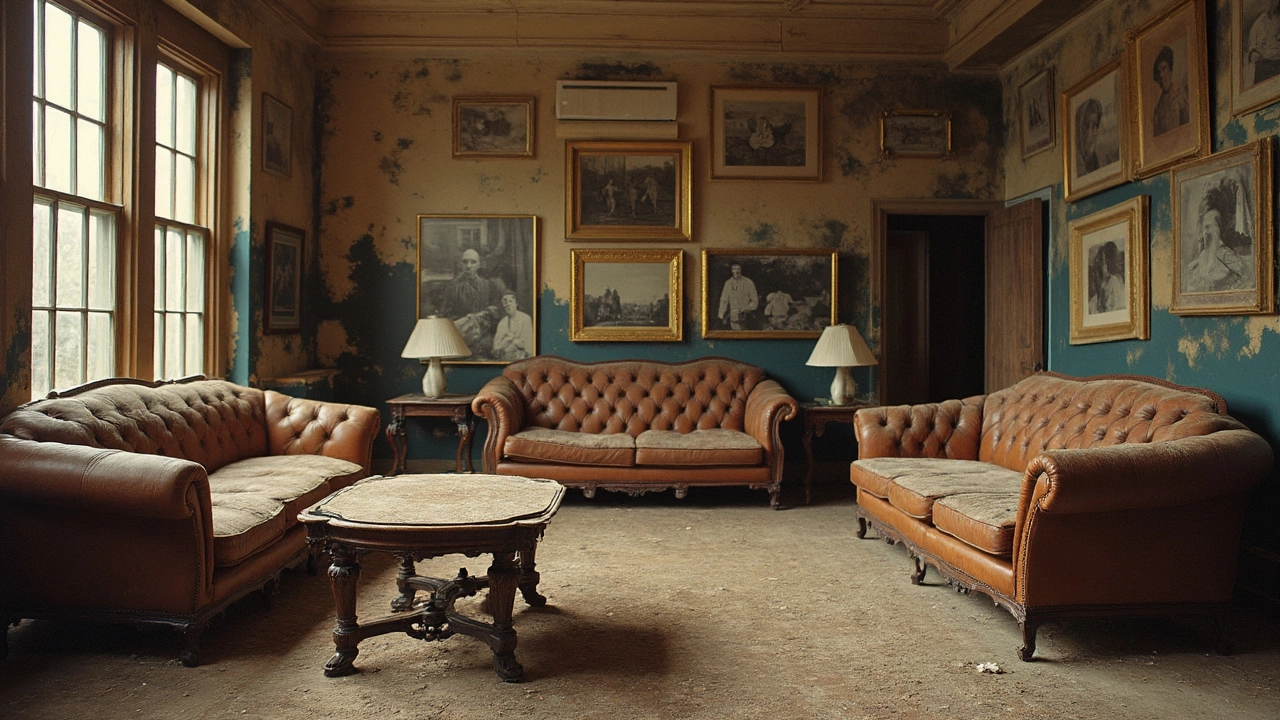So, why did Flexsteel, the company known for its comfy recliners and strong brand reputation, end up closing its doors? It sounds surprising, right? A well-known name, especially in the world of furniture, going bust is a big deal. But when you dig a little deeper, the reasons start to become clear.
Flexsteel had a long history, carving out a niche for reliably comfy furniture with a certain finesse. But the market for furniture was changing faster than a download on high-speed internet. We're talking about new competitors, shifting economic conditions, and, yes, the big disruptor — changing consumer tastes. People started wanting trendier designs, eco-friendly materials, and tech integrations, which were cornerstones that new players embraced.
- Overview of Flexsteel's History
- Market Challenges and Economic Shifts
- Consumer Preferences and Innovations
- Lessons and Future Implications
Overview of Flexsteel's History
Diving into the story of Flexsteel is like tracing the evolution of American furniture. Founded way back in 1893, Flexsteel started its journey in Minneapolis under the name Rolph & Ball Furniture Company. Imagine a time when horse-drawn carriages were no novelty, and this tiny company was laying the groundwork for becoming a major player in the furniture industry.
Fast forward to the mid-20th century, Flexsteel had expanded its product line and rebranded, zeroing in on their now-famous strength but manageable flex of the steel band used in their furniture. This innovation was a game-changer and pretty much the key reason why they were synonymous with durable and comfortable furniture for decades.
The company's strategy involved providing well-built, stylish furniture at a price that wouldn’t send customers scrambling for their purses. Bet they wished they had a nickel every time someone said their recliners felt like a cloud!
Entering the Recliner Market
The 1970s saw Flexsteel experimenting to capitalize on the cozy recliner craze. Their recliners quickly became a staple in American homes, revered for their comfort and durability. They knew their audience, and critics loved how their pieces blended seamlessly with traditional and contemporary styles.
| Year | Event |
|---|---|
| 1893 | Founded as Rolph & Ball Furniture Company |
| 1958 | Rebranded to Flexsteel |
| 1970s | Expansion into the recliner market |
| 2025 | Business closure announced |
The brand was living the dream until everything started shifting more dramatically in the 2000s with increased globalization and changing consumer preferences. Competition grew fierce like a catfight over a sunny spot on the carpet. Yet, Flexsteel kept pushing with quality-focused innovations. But even the strongest steel hits its breaking point when market currents become too overpowering.
Market Challenges and Economic Shifts
When we talk about the downfall of Flexsteel, the market challenges and economic shifts were like a perfect storm. The furniture industry isn't just about styles and trends; it's also deeply connected to what's happening in the broader economy. And over the past few years, things have been pretty bumpy.
Competition from New Entrants
Newer brands jumped into the market with innovative designs and marketing strategies that attracted younger consumers. They were quick, adaptable, and offered stuff that screamed modern living. Meanwhile, traditional names like Flexsteel found it hard to catch up.
Impact of the Global Economy
The global economy hasn't exactly been a joyride. Trade tariffs, fluctuating costs for raw materials, and supply chain hiccups all added pressure. For Flexsteel, importing materials and competing with cheaper international brands slashed profit margins significantly.
Shifts in Consumer Spending
Consumer spending patterns have changed too. More folks are investing in tech-savvy living spaces and less on big-ticket furniture items. During economic downturns, these shifts become more pronounced, hurting businesses like Flexsteel who didn't pivot fast enough.
The Pandemic Effect
And then came the biggie — the pandemic. It altered everything from how people shop to where they spend their money. While some segments of the furniture industry managed to pivot, capitalizing on home-office needs, Flexsteel struggled to adapt its production and distribution strategies quickly enough.
| Year | U.S. Furniture Market Growth | Flexsteel's Revenue Change |
|---|---|---|
| 2018 | +2% | -1% |
| 2019 | +1.5% | -2% |
| 2020 | 0% | -5% |
This combination of increased competition, economic challenges, and slow adaptability painted a pretty clear picture of why things went south for Flexsteel. Their journey is a lesson in how important agility has become in today's fast-paced market.

Consumer Preferences and Innovations
In recent years, the furniture world, especially the realm of recliner chairs, has transformed greatly. It’s not just about comfort anymore. Folks want pieces that blend into the modern aesthetic, offer intriguing features, and cater to environmentally-conscious buyers. Flexsteel, though renowned for quality, found itself struggling to adapt to these evolving demands.
The Design Shift
Remember the days when bulky, plush recliners were all the rage? Those days are pretty much gone. Today, minimalism is king. Mid-century modern designs and multi-functional furniture pieces are what people gravitate towards. It’s all about that clean, sleek look. Flexsteel, with its traditional styles, lagged behind new brands that poured energy into contemporary designs.
Tech Integration
Ever heard of recliners with built-in USB ports and wireless charging? Yep, it's a thing now. New players quickly understood that people want more than just a place to sit and relax. They want their furniture to interact with their tech-laden lives. Unfortunately, Flexsteel was a step slow, while competitors were integrating these features to meet consumer expectations.
Sustainability and Materials
Consumers are getting pretty serious about sustainability. Reclaimed wood, organic fabrics, and eco-friendly materials have become staples in furniture choices. Flexsteel continued to rely mainly on its traditional manufacturing processes, which didn’t emphasize these materials as much. Their existing customer base, known for loving their sturdy designs, was not enough to fend off the new eco-warrior shoppers.
The Age of E-commerce
And here’s another kicker—online shopping. The ease of browsing endless options right from the couch has changed the game. Companies that jumped on digital platforms and optimized their online presence saw a big boost. Sadly, Flexsteel didn’t pivot fast enough, losing ground to rapidly growing e-commerce giants that thrived on smart, fast-paced marketing strategies.
| Factor | Impact on Flexsteel |
|---|---|
| Trendy Designs | Low Adoption - Lagged Behind |
| Tech Innovations | Slow Integration - Missed Opportunities |
| Sustainability Focus | Minimal Implementation - Market Mismatch |
| Online Presence | Underdeveloped - Competitors Excelled |
In a nutshell, as consumer preferences for recliners shifted towards innovation, tech savviness, and sustainability, Flexsteel's slower adaptation to these trends became a significant hindrance. It’s a classic case of how keeping a finger on the pulse of consumer demands is crucial in an ever-changing market.
Lessons and Future Implications
Alright, so what can we take away from the whole Flexsteel saga? It’s not just about pouring your heart out over a company that couldn’t keep up. There are some real lessons here for both businesses and customers in the furniture game.
Adapting to Market Changes
First off, staying still in a moving market is like trying to paddle upstream without a paddle. Flexsteel's story teaches us the importance of adapting to emerging trends and consumer demands. The markets are dynamic, with pressures constantly changing. New designs, eco-friendly options, and digital integrations aren't just optional extras—they're vital. Companies need to stay innovative to keep their furniture relevant.
Consumer-Driven Design
Today's buyers have a louder voice than ever, and they’re not shy about using it. Companies should actively listen to what their customers want. Whether it's through social media feedback or innovative consumer engagement strategies, businesses need to be focused on understanding their audiences. Step into your customers' shoes to know what they need, and then deliver it.
Financial Management
Then there's financial management. Keeping finances in check is crucial. More than just chasing the latest trend, it's about balancing your bets. Solid financial practices help buffer against economic shifts or unexpected downturns. After all, you never want to find yourself in the red when the market takes a dive.
Looking Ahead
So, what's next for the furniture industry? With continual reinvention, there’s always going to be room for newcomers. Companies can look into technology integrations, perhaps merging smart home tech with traditional items. Plus, sustainability isn't going away, so exploring recyclable materials or processes could give businesses a competitive edge.
To sum up, the lessons from Flexsteel's closure are clear: Stay adaptable, listen to consumers, and keep wise fiscal strategies. With these on the agenda, businesses can better navigate the twists and turns of evolving markets.


Write a comment